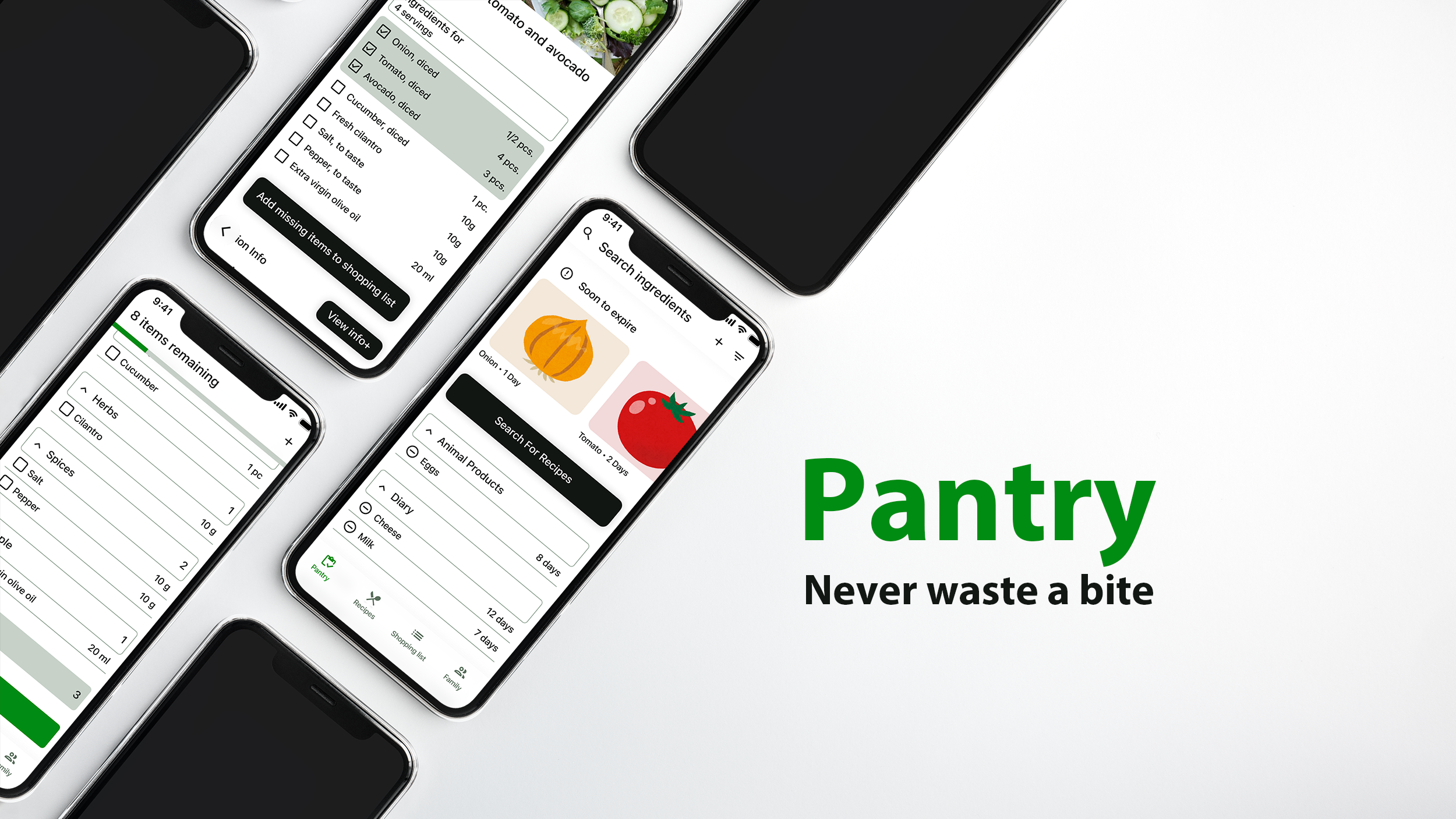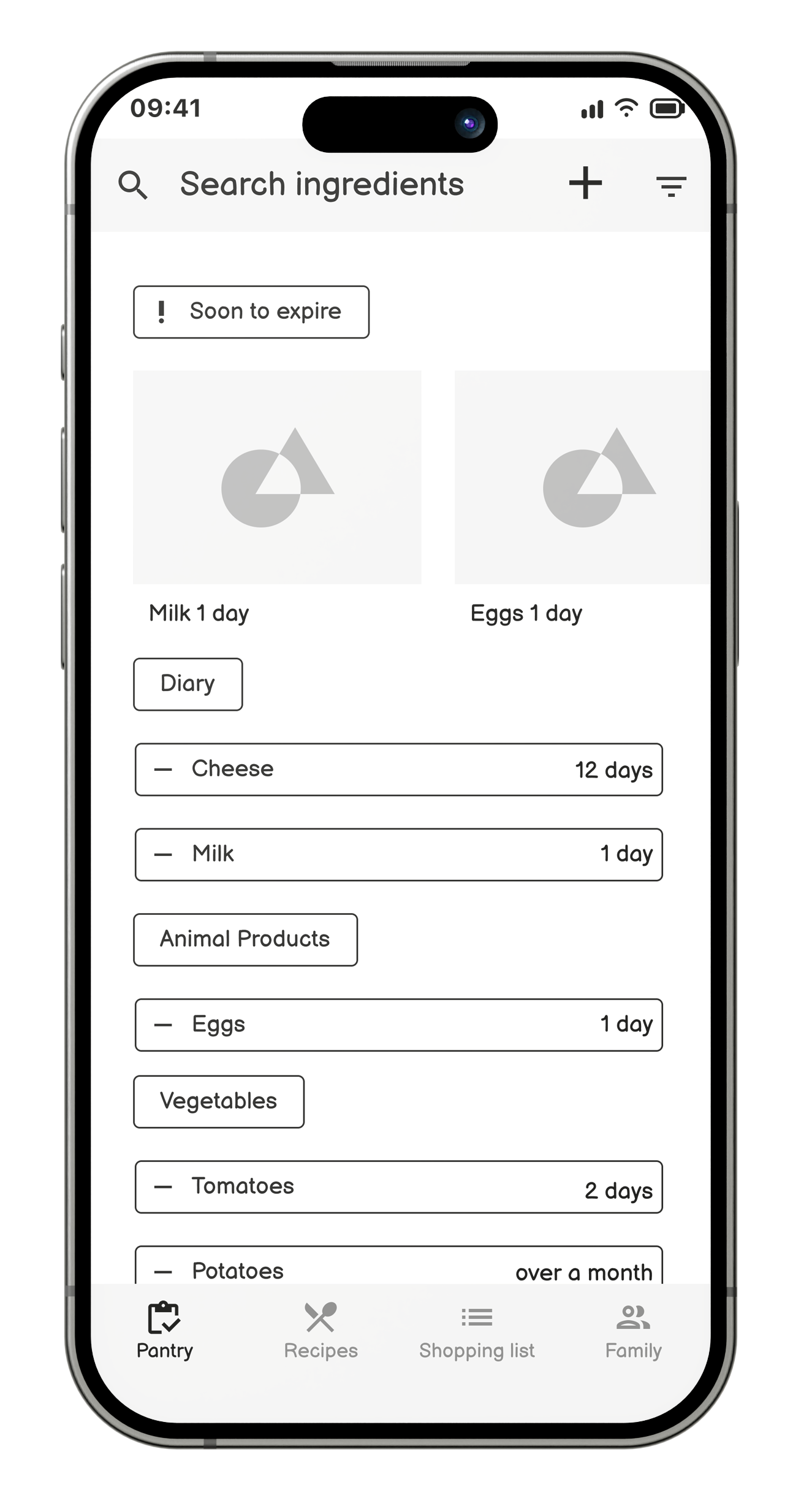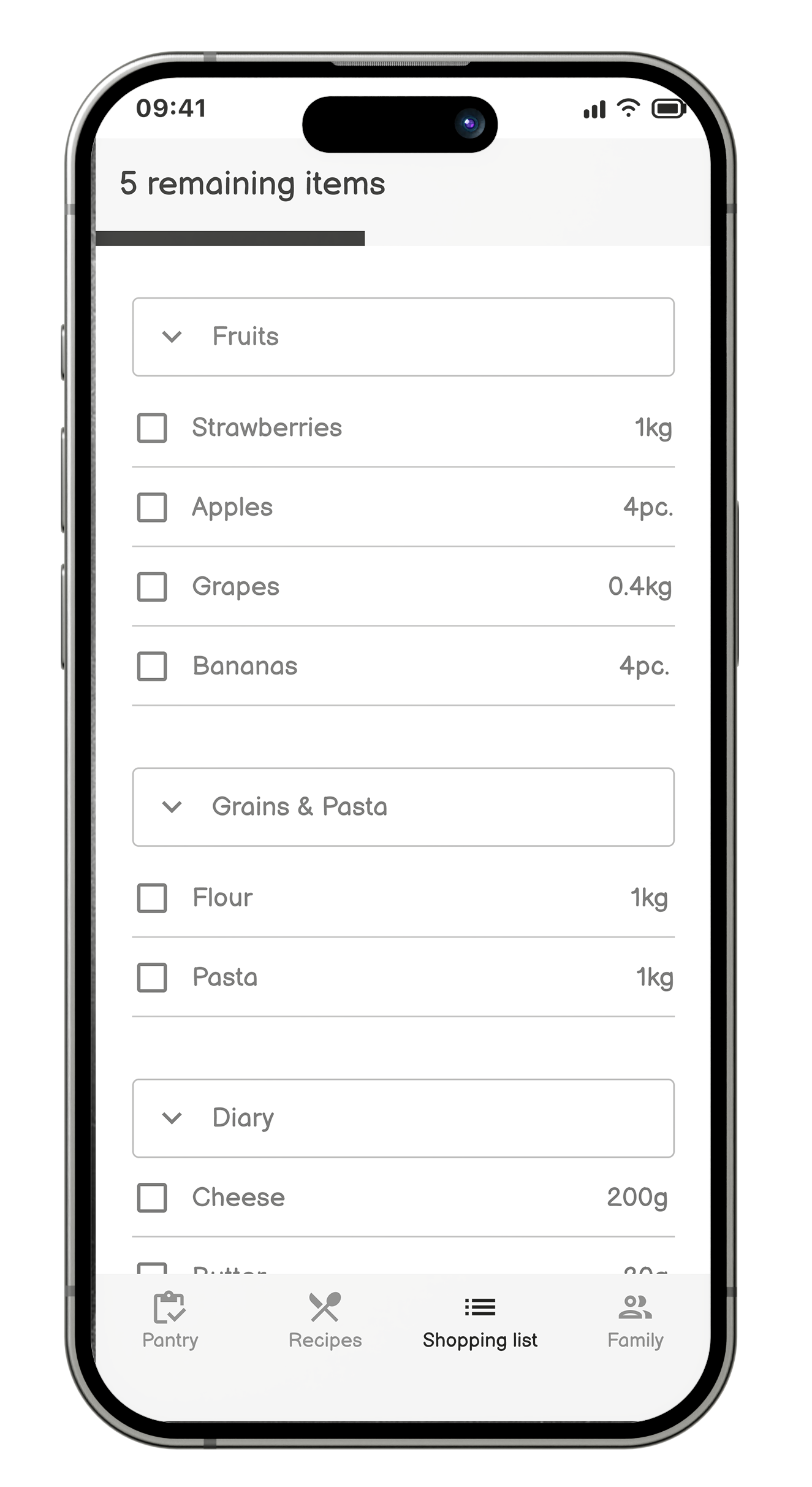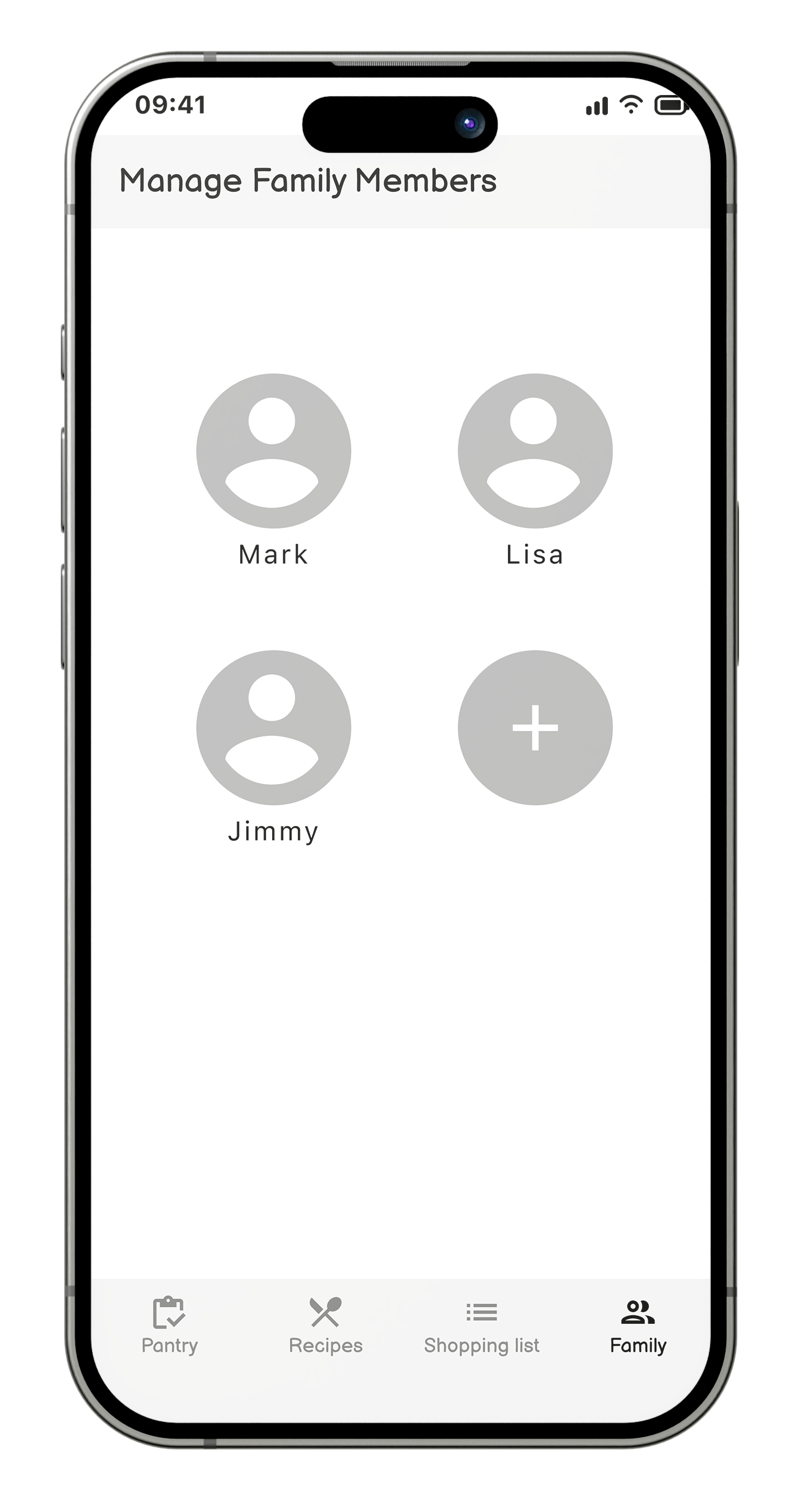Context
This project was conceived during a four-month bootcamp organized by "Școala Informală De IT" at the outset of 2024. The project's scope was defined by the prompt: "Supporting individuals with sustainability concerns to cultivate sustainable behaviors in their daily lives as consistently as possible."
Sustainability is an increasingly prominent topic in contemporary discourse. One important sector demanding consideration in addressing this objective is the food industry, encompassing not only large-scale enterprises that process raw materials into finished goods but also individual consumers.
Sustainability is an increasingly prominent topic in contemporary discourse. One important sector demanding consideration in addressing this objective is the food industry, encompassing not only large-scale enterprises that process raw materials into finished goods but also individual consumers.
Team
I collaborated with Lavinia Chirilă and Xenia Bozga in a team setting, primarily during the research phase, facilitating the exchange of insights and findings. Following this collaborative phase, we pursued individual work to the final result.
However, the constraints of a small team size presented challenges in gathering data within strict deadlines, leading to a limited pool of information. Overcoming this challenge not only enhanced our understanding of user needs but also honed our teamwork and communication skills within a tightly-knit team environment.
However, the constraints of a small team size presented challenges in gathering data within strict deadlines, leading to a limited pool of information. Overcoming this challenge not only enhanced our understanding of user needs but also honed our teamwork and communication skills within a tightly-knit team environment.
Understanding the task
Problem space
First and foremost, we started with our own assumptions regarding sustainability, with food waste as our primarly focus. We fact-checked the most critical aspects that posed a risk of undermining all our efforts if not addressed at an early stage. For example, a high-risk assumption was that consumers discard a significant amount of food.
After conducting quick research using reliable studies from the UN, we discovered that Romania faces a major issue concerning food waste, with the most notable contributor being individual households, accounting for 65% of the total food waste.
After conducting quick research using reliable studies from the UN, we discovered that Romania faces a major issue concerning food waste, with the most notable contributor being individual households, accounting for 65% of the total food waste.

65% Households
24% Catering Services
11% Retail
24% Catering Services
11% Retail
This led us to the following problem statement:
"We aim to help people develop and maintain sustainable habits. We know that it's expensive and hard to build and maintain a sustainable habit, small changes help contribute to the big picture, a lot of food goes to waste. However, we have a limited understanding of who are the people who could benefit from supporting food waste, what their current behaviors are, and their experience with sustainable food practices. As a result, our research aims to find insights about how we could support a reduction in food waste in Romania."
"We aim to help people develop and maintain sustainable habits. We know that it's expensive and hard to build and maintain a sustainable habit, small changes help contribute to the big picture, a lot of food goes to waste. However, we have a limited understanding of who are the people who could benefit from supporting food waste, what their current behaviors are, and their experience with sustainable food practices. As a result, our research aims to find insights about how we could support a reduction in food waste in Romania."
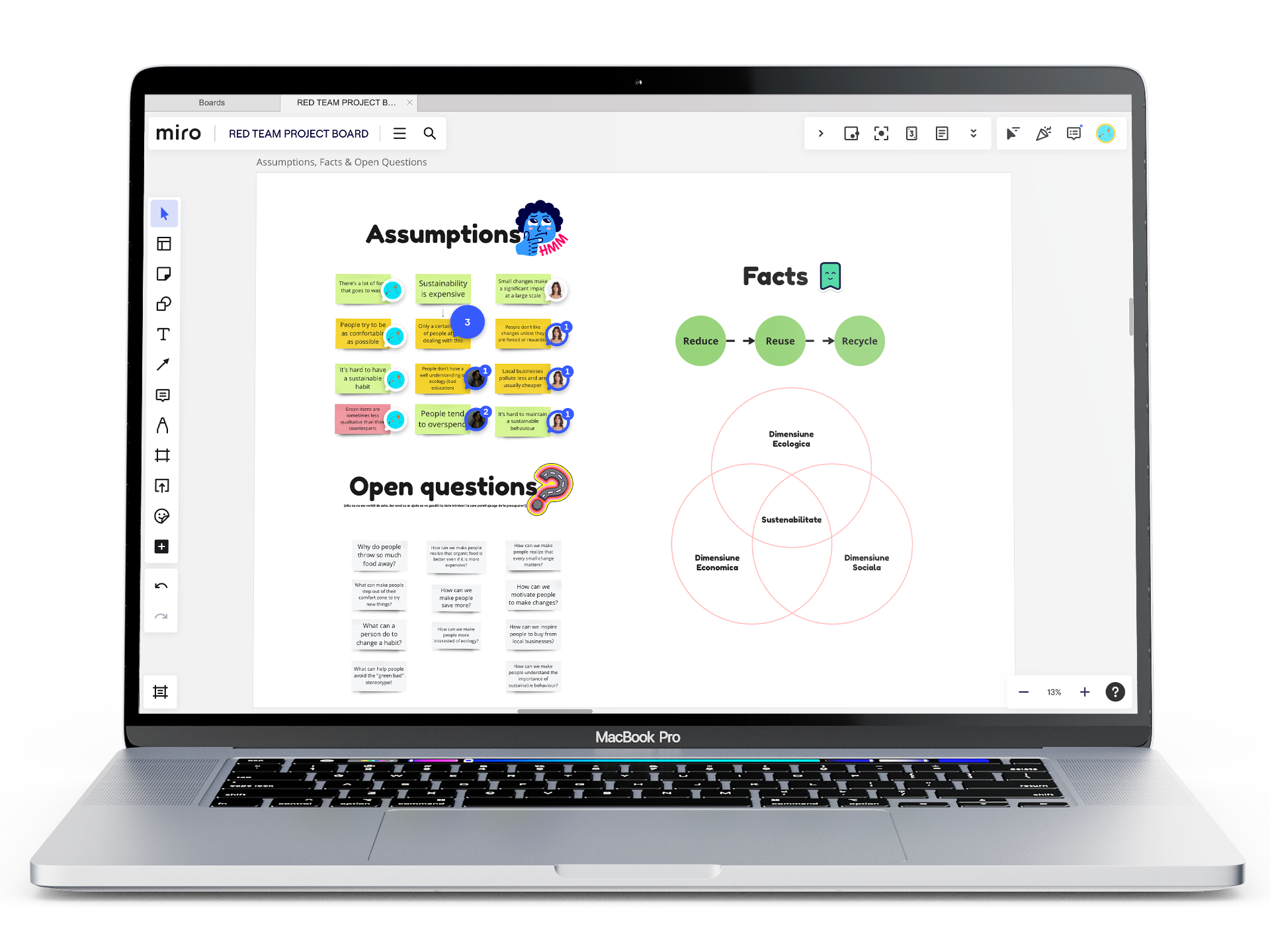
Finding real-world challanges
Research
In alignment with our research problem statement, we had to listen to people's challenges to effectively address genuine needs in real-world scenarios.
I conducted interviews with two individuals specifically chosen for their strong beliefs regarding the importance of addressing the food waste dilemma. Home cooking emerged as a focal point during the discussions, allowing us to obtain details into people's habits and attitudes.
I conducted interviews with two individuals specifically chosen for their strong beliefs regarding the importance of addressing the food waste dilemma. Home cooking emerged as a focal point during the discussions, allowing us to obtain details into people's habits and attitudes.
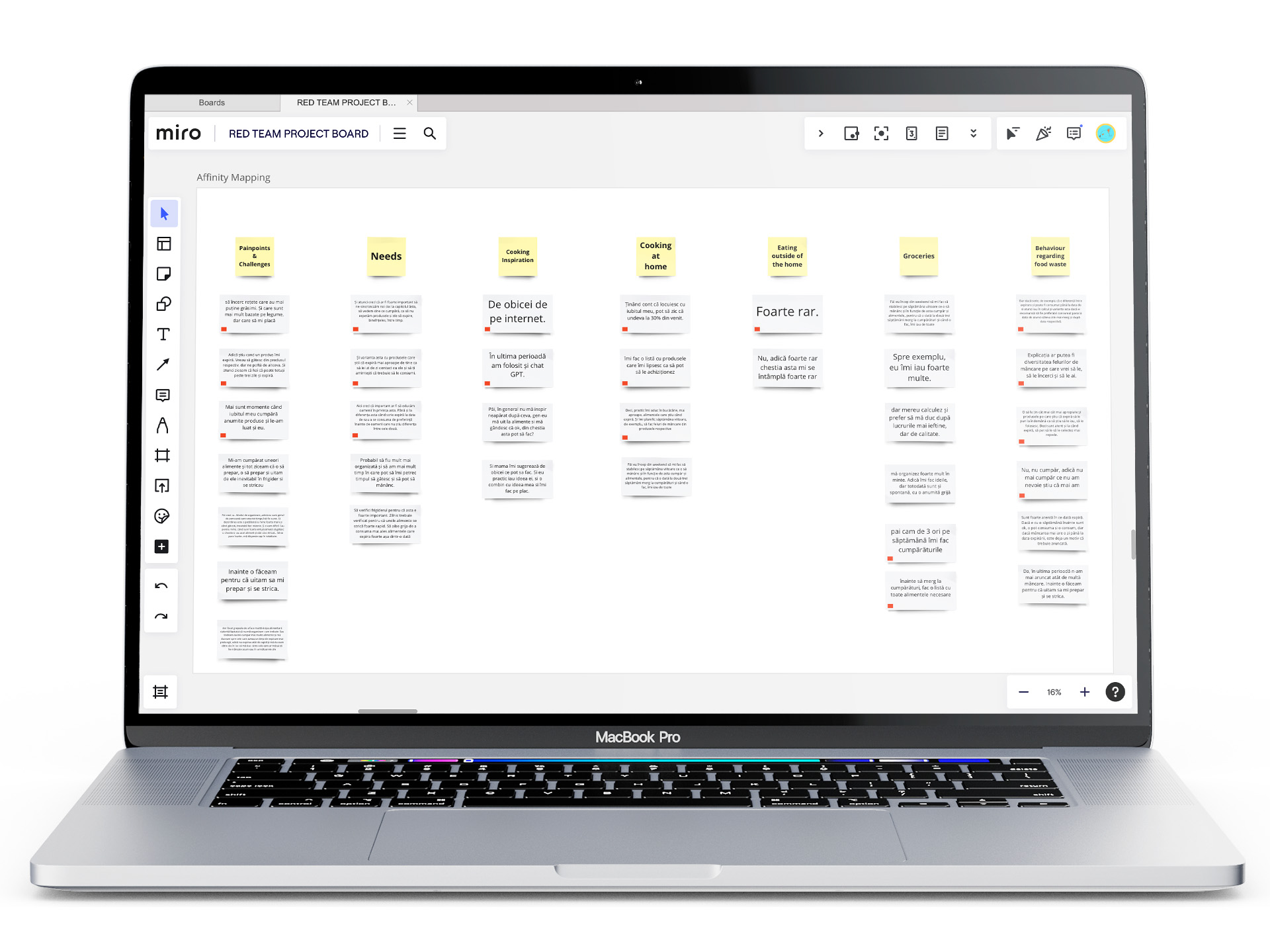

The users encounter challenges in remembering the available food products stored.

They lack guidance on meal preparation using available ingredients.

Family members frequently encounter communication challenges, resulting in an excess of duplicate items.
The selected key insights are as follows:
Let's take a look on how we can help the users
Ideation
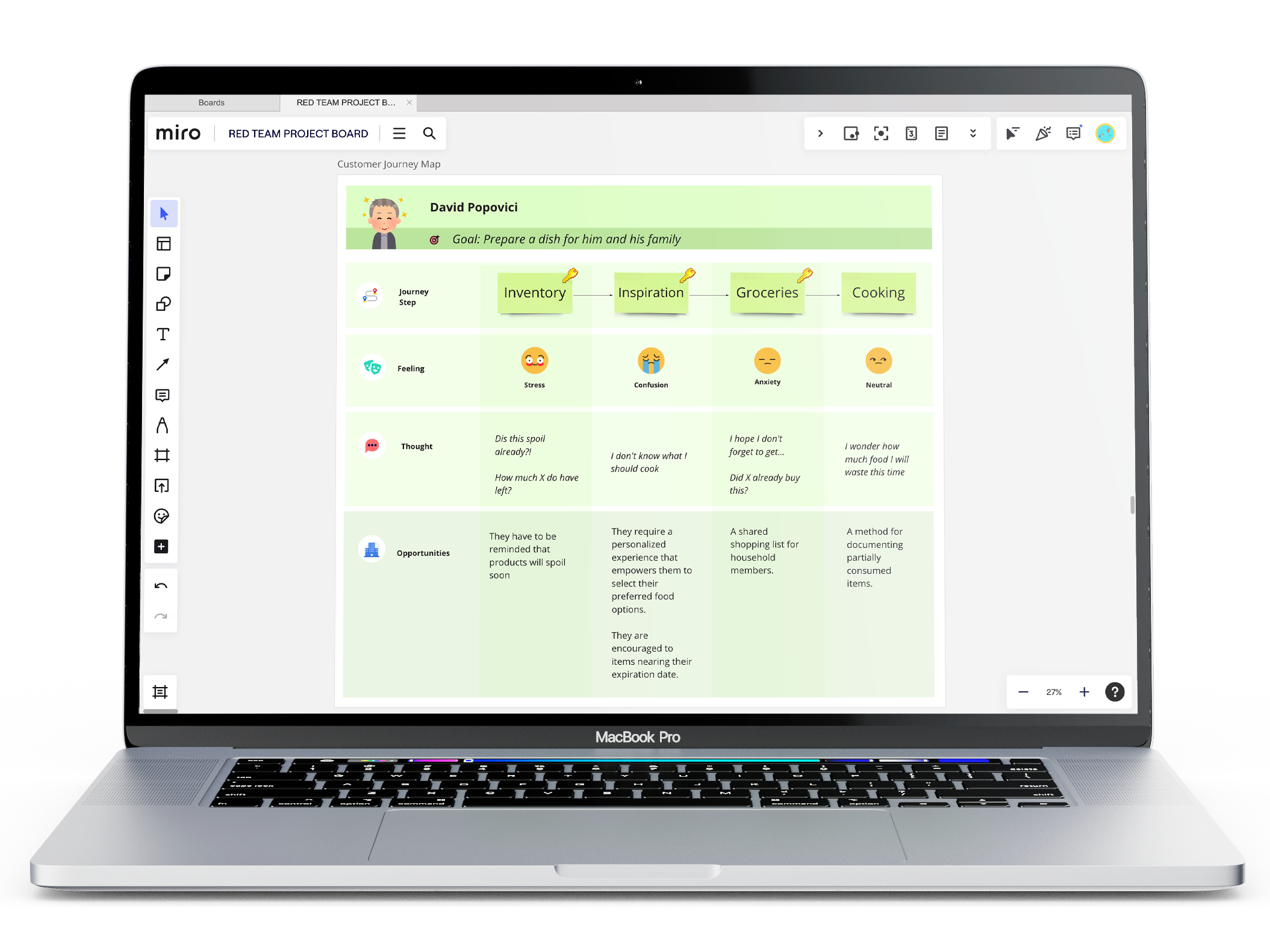

How might we help people keep track of their soon-to-expire products?

How might we help people manage their food stocks better?

How might we help people get ideas to use their soon-to-expire products for recipes?

How might we help people communicate better with family members regarding groceries?

How might we make it easy for people to create and use a shopping list?
These key questions guided our process towards crafting a product with significant impact:
The interviews prompted the creation of a customer journey map, enabling us to comprehensively grasp customer needs and pain points while identifying opportunities for optimizing the user experience.
My solution
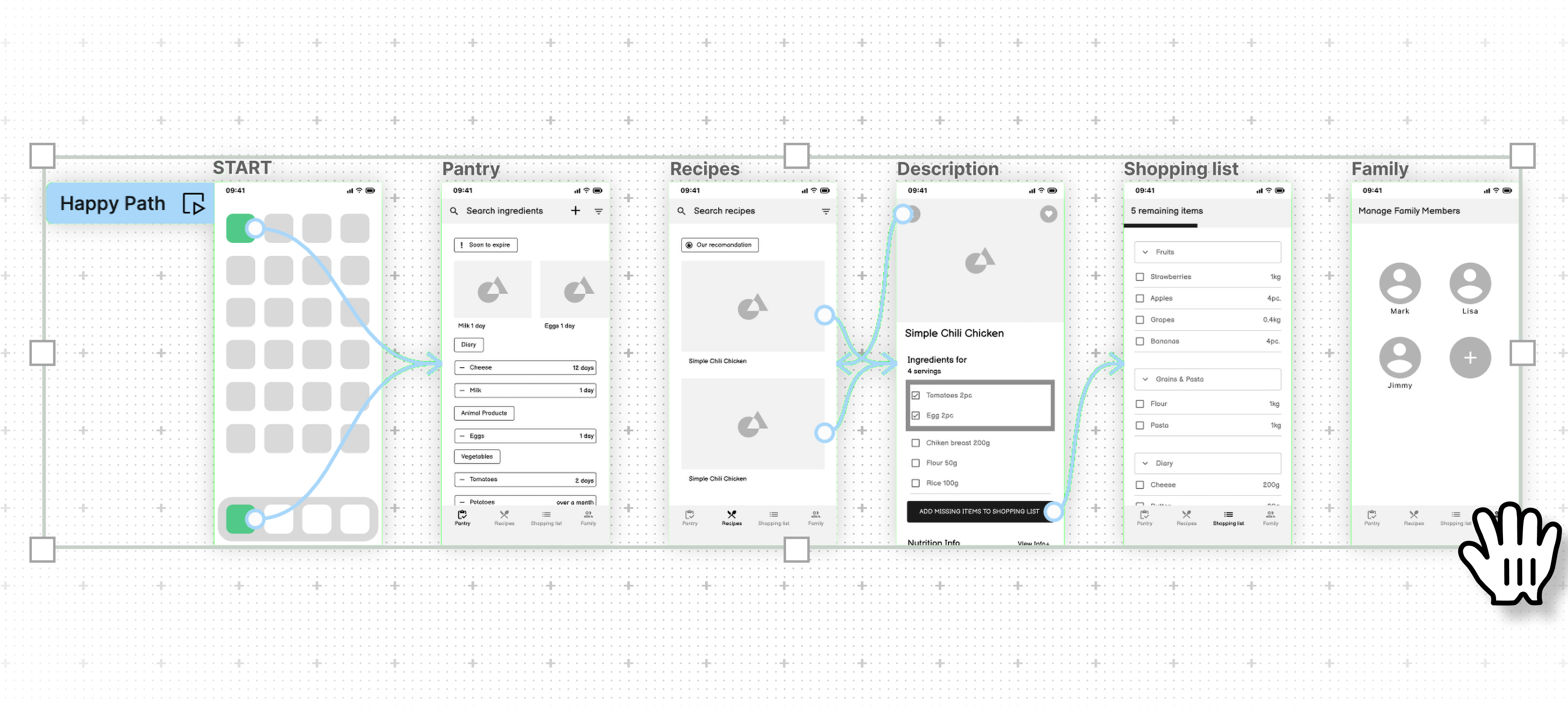
This represents the initial phase of my solution, offering users a comprehensive inventory management system.
It enables users to effortlessly view their stock, facilitating manual or AI-assisted additions through the phone's camera.
The system tracks expiration dates and suggests recipes based on available ingredients, while also allowing users to explore recipes based on existing pantry items.
It automatically adds the missing ingredients to the shopping list.
Additionally, it seamlessly integrates with a shared family inventory, ensuring a unified approach to food management.
View prototypeIt enables users to effortlessly view their stock, facilitating manual or AI-assisted additions through the phone's camera.
The system tracks expiration dates and suggests recipes based on available ingredients, while also allowing users to explore recipes based on existing pantry items.
It automatically adds the missing ingredients to the shopping list.
Additionally, it seamlessly integrates with a shared family inventory, ensuring a unified approach to food management.
Limitations
Manually inputting all products can pose a significant inconvenience for users who frequently shop for groceries. To address this issue, the application can leverage advanced AI models capable of identifying the types of products depicted in images. Despite the vast array of product variations, machine learning technologies have significantly progressed in recent years, promising further improvements in accuracy.
Is it an effective tool?
Testing

The user said that they would love to have a way to keep track of their ingredients

The shared inventory and shopping list is a good idea for families

The users might forget about an item, so they also need to receive a notification when the deadline aproaches

Incorporating clips is an excellent method to provide users with additional information.
Additionally, I've gathered feedback on issues that could significantly affect the user experience:
Following the test, I implemented a button to clearly guide users on how to find recipes based on their pantry, addressing previous confusion where users had to navigate to the "Recipes" tab. With that resolved, everything proceeded smoothly, and I proceeded with the mockup.
This marked the turning point for my project, as I delved into concept testing and usability testing. I enlisted a home cook to gauge the strength of my solution. The results? Quite promising:
Let's create some visual allure
High Fidelity Mockup
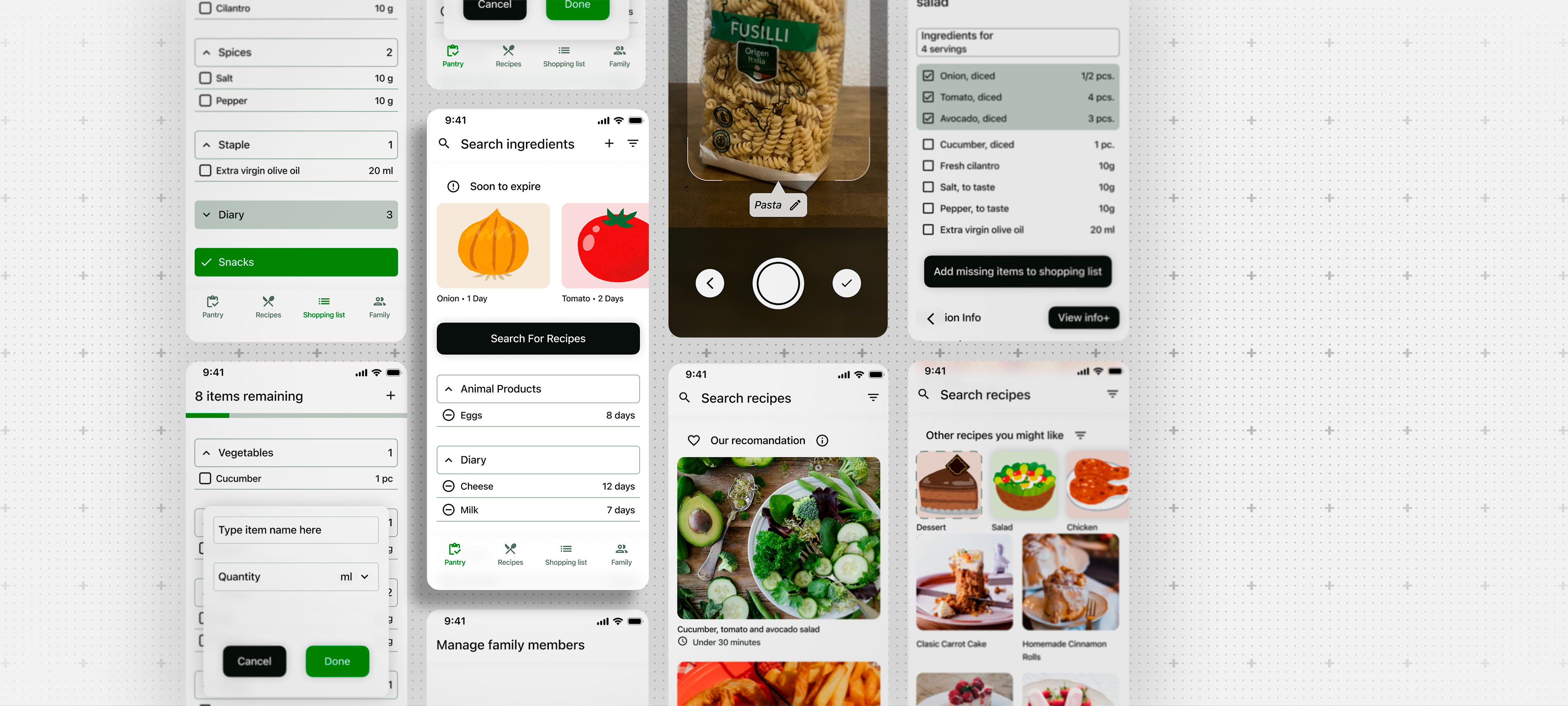

Incorporating an AI assistant capable of providing guidance to users during cooking processes, should any issues arise.

Offer insights into usage patterns and food consumption trends
Future
We possess a viable solution; however, our work doesn't conclude here. It requires a continuous integration of features to enhance its efficiency. Some promising avenues for further exploration include:
